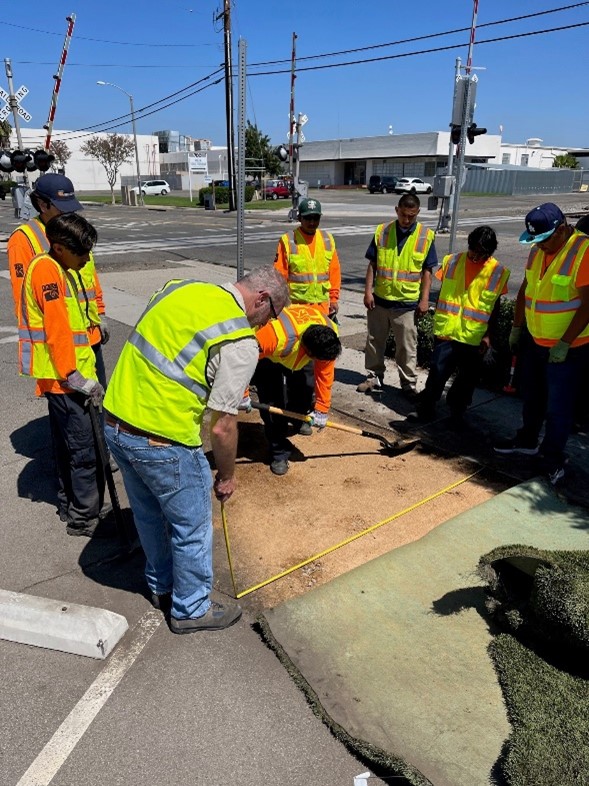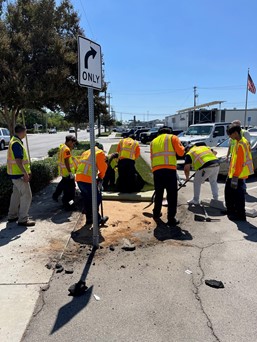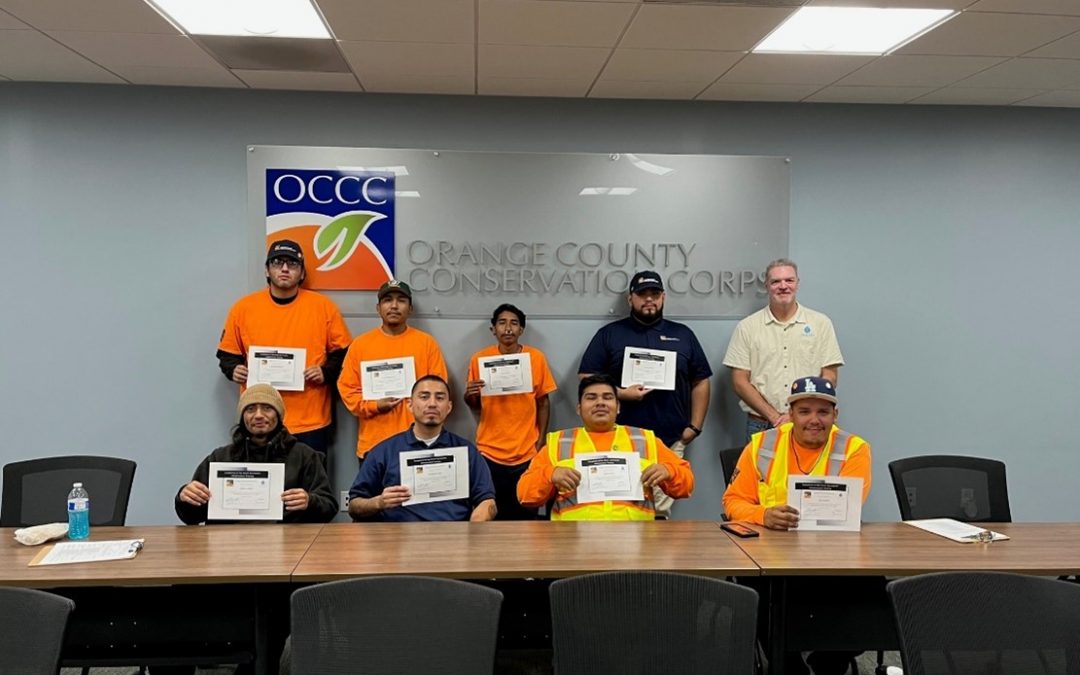

We launched our Green Stormwater Infrastructure (GSI) Training Program. Our curriculum combines classroom learning with hands-on interactive field training. The GSI experts continue to work with our OCCC workforce development staff and provide new skills and opportunities to our Corpsmembers.
What is Green Stormwater Infrastructure? Runoff from stormwater continues to be a major cause of water pollution in urban areas. It carries trash, bacteria, heavy metals, and other pollutants through storm sewers into local waterways. Heavy rainstorms can cause flooding that damages property and infrastructure.
Historically, communities have used gray infrastructure—systems of gutters, pipes, and tunnels—to move stormwater away from where we live to treatment plants or straight to local water bodies. The gray infrastructure in many areas is aging, and its existing capacity to manage large volumes of stormwater is decreasing in areas across the country. To meet this challenge, many communities are installing green infrastructure systems to bolster their capacity to manage stormwater. By doing so, communities are becoming more resilient and achieving environmental, social and economic benefits.
Basically, green infrastructure filters and absorbs stormwater where it falls. In 2019, Congress enacted the Water Infrastructure Improvement Act, which defines green infrastructure as “the range of measures that use plant or soil systems, permeable pavement or other permeable surfaces or substrates, stormwater harvest and reuse, or landscaping to store, infiltrate, or evapotranspirate stormwater and reduce flows to sewer systems or to surface waters.”
Green infrastructure elements can be woven into a community at several scales. Examples at the urban scale could include a rain barrel up against a house, a row of trees along a major city street, or greening an alleyway. Neighborhood scale green infrastructure could include acres of open park space outside a city center, planting rain gardens or constructing a wetland near a residential housing complex. At the landscape or watershed scale, examples could include protecting large open natural spaces, riparian areas, wetlands or greening steep hillsides. When green infrastructure systems are installed throughout a community, city or across a regional watershed, they can provide cleaner air and water as well as significant value for the community with flood protection, diverse habitat, and beautiful green spaces.

